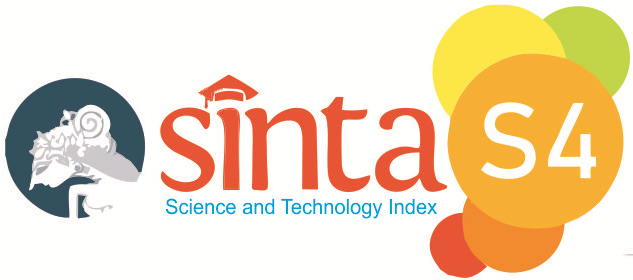Spatial ability and learning achievement in transformation geometry: A correlation study
DOI:
https://doi.org/10.32332/c7qx3x93Keywords:
spatial ability, learning achievement, transformation geometryAbstract
Spatial ability is one of the essential factors for individuals' success in learning geometry. However, limited studies have specifically explored the extent to which spatial ability affects students' achievement in transformation geometry. This study aims to investigate the correlation between spatial ability and the learning achievement of mathematics education students in transformation geometry courses. A quantitative approach with a causal-correlational design was employed. The population consisted of all fourth-semester students enrolled in the Mathematics Education Study Program at IAIN Pontianak, totaling 28 students. The entire population was selected as the sample using the total sampling technique. Data on spatial ability were collected through a spatial ability test, while data on learning achievement in transformation geometry were obtained through documentation. The collected data were analyzed using descriptive and inferential statistics, including correlation analysis, t-tests, and simple linear regression analysis. The findings reveal a positive and statistically significant relationship between spatial ability and learning achievement in transformation geometry. Consequently, lecturers must design strategies that effectively accommodate and enhance students' spatial abilities. Improving spatial ability is expected to contribute positively to students' learning achievement in transformation geometry courses.
References
Anjarsari, E. (2019). Mengembangkan kemampuan spasial siswa melalui pendekatan saintifik dalam pembelajaran matematika. Jurnal Reforma, 7(2), 55. https://doi.org/10.30736/rfma.v7i2.77
Clements, D. H., & Battista, M. T. (1992). Geometry and spatial reasoning. In D. A. Grouws (Ed.), Handbook of research on mathematics teaching and learning (Vol. 420, p. 464). Macmillan.
Fajri, H. N., Johar, R., & Ikhsan, M. (2017). Peningkatan Kemampuan Spasial dan Self-Efficacy Siswa Melalui Model Discovery Learning Berbasis Multimedia. Beta Jurnal Tadris Matematika, 9(2), 180. https://doi.org/10.20414/betajtm.v9i2.14
Hearn, D., Baker, P., & Carithers, W. R. (2014). Computer graphics with Open GL (4th ed.). Pearson Education Limited.
Hodiyanto, H. (2018). Kemampuan spasial sebagai prediktor terhadap prestasi belajar geometri mahasiswa. Jurnal Mercumatika : Jurnal Penelitian Matematika Dan Pendidikan Matematika, 2(2), 59. https://doi.org/10.26486/jm.v2i2.364
Idris, N. (2006). Teaching and Learning of Mathematics: Making Sense and Developing Cognitives Ability. Utusan Publications & Distributors Sdn. Bhd.
Lowrie, T., Logan, T., & Ramful, A. (2016). Spatial Reasoning Influences Students’ Performance on Mathematics Tasks. In B. White, M. Chinnappan, & S. Trenholm (Eds.), Proceedings of the 39th annual conference of the Mathematics Education Research Group of Australasia (pp. 407–414). MERGA.
Mahfuddin, M., & Caswita, C. (2021). Analisis kemampuan pemecahan masalah pada soal berbasis high order thinking ditinjau dari kemampuan spasial. AKSIOMA: Jurnal Program Studi Pendidikan Matematika, 10(3), 1696. https://doi.org/10.24127/ajpm.v10i3.3874
NCTM. (2000). Principles Standards and for School Mathematics. The National Council of Teachers of Mathematics.
Olkun, S. (2003). Making connections: Improving spatial abilities with engineering drawing activities. International Journal of Mathematics Teaching and Learning, 3(1). http://www.ex.ac.uk/cimt/ijmtl/ijabout.htm
Rizqiyani, R., Fatimah, S., & Cahya, E. (2017). Desain didaktis bangun ruang sisi datar untuk meningkatkan level berpikir geometri siswa SMP. Journal on Mathematics Education Research (J-MER), 2(1), 1–12.
Rustanuarsi, R. (2023). Kemampuan Spasial Mahasiswa Program Studi Tadris Matematika dalam Materi Geometri Transformasi. J-PiMat: Jurnal Pendidikan Matematika, 5(1), 705–714.
Saputro, M., Ardiawan, Y., & Fitriawan, D. (2015). Faktor-faktor yang mempengaruhi prestasi belajar (studi korelasi pada mahasiswa pendidikan matematika ikip pgri pontianak). Jurnal Pendidikan Informatika Dan Sains, 4(2), 233–246.
Siregar, S. (2017). Statistika terapan untuk perguruan tinggi. Jakarta: Kencana.
Sudirman, S., & Alghadari, F. (2020). Bagaimana mengembangkan kemampuan spasial dalam pembelajaran matematika di sekolah?: Suatu tinjauan literatur. Journal of Instructional Mathematics, 1(2), 60–72. https://doi.org/10.37640/jim.v1i2.370
Susanto, S., & Mahmudi, A. (2021). Tahap berpikir geometri siswa SMP berdasarkan teori Van Hiele ditinjau dari keterampilan geometri. Jurnal Riset Pendidikan Matematika, 8(1), 106–116. https://doi.org/10.21831/jrpm.v8i1.17044
Downloads
Published
Issue
Section
License
Copyright (c) 2025 Ressy Rustanuarsi

This work is licensed under a Creative Commons Attribution-ShareAlike 4.0 International License.

















